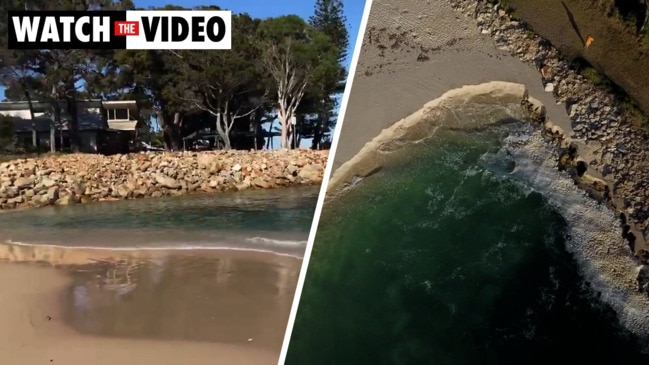Call for Straddie ILUA land deal details to be made public
A heated stoush over clearing a multimillion-dollar block of land on North Stradbroke Island has sparked calls for details of native title land deals to be made public.

Redlands Coast
Don't miss out on the headlines from Redlands Coast. Followed categories will be added to My News.
A heated stoush over clearing a multimillion-dollar block of land on North Stradbroke Island has sparked calls for details of native title land deals to be made public.
The calls from residents and businesses to the state government were made after the bitter row broke out in May when banksia trees and bush were cleared on land on Samarinda Way, overlooking Main Beach.
The Department of Resources said the land was reserve held in trust by Redland City Council and the Quandamooka Yoolooburrabee Aboriginal Corporation and clearing for housing was allowed.

But Straddie Chamber of Commerce president Colin Battersby said island landowners were surprised the hillside land overlooking Main Beach could be developed.
He called for details of Indigenous Land Use Agreements to be made public so all island residents had certainty about future projects and land subdivisions.
The Indigenous Land Use Agreements, known as ILUAs, were signed between the native title holders, the state government and the local Redland City Council after a 2011 Federal Court ruling but not all of the deals’ contents have been made public.
Under the agreements, traditional owners are permitted to chop trees and build houses in national parks.
But since they were signed, confusion has grown over some land status, how some sites can be used, and which authority must assess development applications for subdivisions of state lands.
Mr Battersby said island landowners wanted to know the ILUA details to gain certainty about future projects and land subdivisions.
“Let’s remove the secrecy so all development is transparent,” he said.
“We are not asking for commercial-in-confidence information – all we want to know are the rules that all landowners have to abide by and who receives money from the sale of any state land,” he said.
“That way, all landowners have certainty.”

Island resident Judith Carne wrote to the premier and the Environment Department concerned some land had been cleared, igniting what she claimed were tensions resulting in “death and property threats on social media”.
In her letter, Ms Carne claimed the land on Samarinda Way should not have been cleared.
A spokesman for Resources Minister Scott Stewart said the land could be cleared for housing and a state government investigation had found only “a very small area of canopy cover change”.
The spokesman said broadscale clearing for agriculture was prohibited but state laws for vegetation management allowed limited clearing in certain circumstances, including for a residence or managing fire risks.
“Clearing can be undertaken without permit or notification to the department if undertaken by, or for, the trustee,” the spokesman said.
“The department has subsequently contacted the council regarding the canopy cover change on Lot 130 (Samarinda Way).
“The council advised that it is aware of the matter. The department will continue to assist the council with its investigation as required.”

In July, Redland City Council said it was investigating the land clearing to determine whether it required council permission for development.
“To ensure the integrity of that investigation, the council is not at liberty to discuss the status of that investigation. However it will advise the necessary parties once the investigation is concluded,” the council said.
“The 2011 Federal Court native title determination and the State Government policy on native title and land use planning, states that the exercise of native title rights and interests are not exempt from the laws of the State or Commonwealth.
“The exercise of native title rights and interests, if assessable development under the Planning Act 2016, still requires a development approval under that Act and is to be assessed against the provisions in the applicable local planning instrument.
“Council continues to advocate for a consistent and uniform application of laws including vegetation clearing and building works on state government reserves.”
The council said penalties for breaching planning and local laws were wide ranging and included infringement notices, revegetation orders and court proceedings, which, if successful, could result in fines.
QYAC was contacted for this story.





